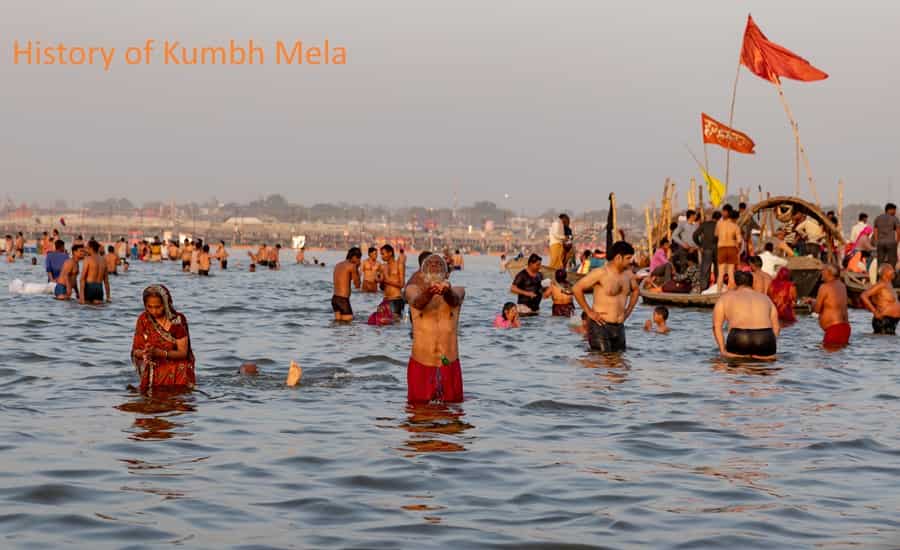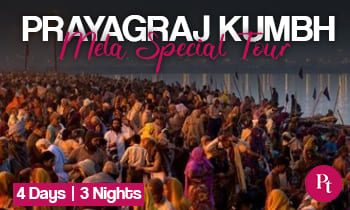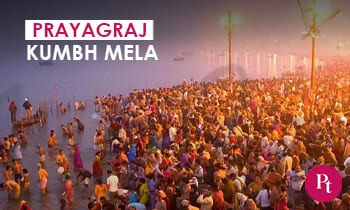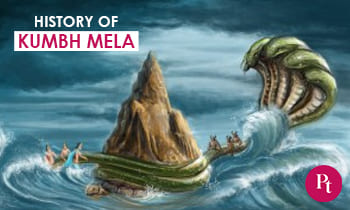The Kumbh Mela stands as one of the most awe-inspiring religious gatherings on the planet, drawing millions of pilgrims from across India and around the world. Its roots delve deep into the annals of ancient Indian civilization, intertwining with religious, cultural, and historical narratives that have shaped the subcontinent for millennia. In this comprehensive exploration, we embark on a journey through time, unraveling the intricate tapestry of the Kumbh Mela’s history and illuminating its profound significance in the hearts and minds of millions.

Ancient Origins and Mythological Significance
To comprehend the essence of the Kumbh Mela, we must first delve into its ancient origins and mythological underpinnings. Rooted in Hindu cosmology and mythology, the Kumbh Mela traces its genesis to the mythical churning of the cosmic ocean, known as the Samudra Manthan. According to Hindu scriptures, this celestial event gave birth to Amrita, the nectar of immortality, which the gods and demons fiercely coveted.
Legend has it that during the tumultuous battle for the possession of Amrita, drops of this divine elixir fell at four sacred locations on Earth: Prayag (modern-day Allahabad), Haridwar, Ujjain, and Nasik. These sites became imbued with immense spiritual potency, believed to grant liberation from the cycle of birth and death to those who partake in their sacred waters.
Historical Evolution: From Ancient Pilgrimages to Modern Spectacles
While the mythological origins of the Kumbh Mela lay in antiquity, its historical evolution reveals a dynamic interplay of religious, social, and political forces. The earliest references to large-scale pilgrimages and bathing rituals at these sacred sites can be found in ancient Indian texts, including the Vedas, Puranas, and epics like the Mahabharata and Ramayana.
Over the centuries, these local pilgrimages gradually evolved into larger gatherings, attracting devotees and ascetics from far-flung regions. By the medieval period, the Kumbh Mela had emerged as a significant religious event, marked by elaborate rituals, discourses by sages and scholars, and the exchange of spiritual wisdom.
The advent of colonial rule in India ushered in a new chapter in the history of the Kumbh Mela. British administrators, recognizing the immense cultural and economic potential of these gatherings, sought to regulate and institutionalize them. The Kumbh Melas became not only sites of religious fervor but also platforms for colonial authority to assert control and extract revenue.
Symbolism and Spiritual Significance
At its core, the Kumbh Mela embodies profound symbolism and spiritual significance, reflecting the eternal quest for transcendence and self-realization. The act of bathing in the sacred rivers symbolizes purification of the body, mind, and soul, while the convergence of millions of pilgrims underscores the unity and diversity of humanity.
For devotees, the Kumbh Mela represents a rare opportunity to seek blessings from revered saints and gurus, participate in sacred rituals, and immerse themselves in the divine atmosphere permeating the festival grounds. It is a time of introspection, prayer, and renewal, as pilgrims strive to deepen their spiritual connection and attain spiritual liberation.
Cultural Heritage and National Identity
Beyond its religious significance, the Kumbh Mela holds immense cultural and historical significance, serving as a custodian of India’s rich heritage and traditions. The festival provides a vibrant showcase of India’s cultural diversity, with pilgrims hailing from diverse linguistic, ethnic, and socio-economic backgrounds coming together in a spirit of harmony and unity.
Moreover, the Kumbh Mela has played a pivotal role in shaping India’s national identity and consciousness. From the struggle for independence against colonial rule to the promotion of cultural pluralism and religious tolerance, the Kumbh Mela has been a symbol of India’s resilience, unity, and spiritual resilience.
Contemporary Relevance and Global Impact
In an era marked by rapid globalization and technological advancement, the Kumbh Mela continues to captivate the imagination of millions worldwide, transcending geographical boundaries and cultural barriers. Its timeless message of harmony, peace, and spiritual awakening resonates with people of all faiths and backgrounds, inspiring a renewed sense of collective purpose and shared humanity.
Moreover, the Kumbh Mela serves as a powerful catalyst for socio-economic development and tourism promotion, generating significant revenue and employment opportunities for local communities. Its impact extends far beyond the realm of religion, encompassing diverse sectors such as hospitality, transportation, and infrastructure development.
Conclusion
In conclusion, the Kumbh Mela stands as a testament to the enduring power of faith, tradition, and collective ritual in shaping human civilization. From its ancient origins steeped in mythology to its modern-day incarnation as a global phenomenon, the Kumbh Mela continues to inspire awe and reverence, beckoning pilgrims on a sacred journey of self-discovery and spiritual renewal.
As we reflect on the rich tapestry of history and significance woven into the fabric of the Kumbh Mela, we are reminded of the timeless wisdom encapsulated in its sacred waters: that amidst the ebb and flow of life’s myriad challenges and uncertainties, the quest for transcendence and inner peace remains the ultimate pilgrimage of the human soul.











 Call
Call WhatsApp
WhatsApp Enquiry
Enquiry